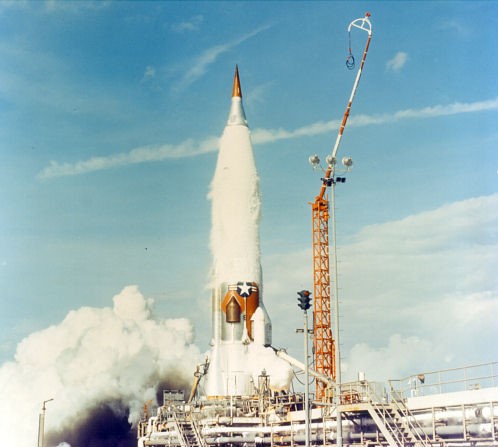ATLAS F FACT SHEET
By Cliff Lethbridge

Atlas F Launch, Photo Courtesy U.S. Air Force
Classification: Inter-Continental Ballistic Missile
Length: 82 feet, 6 inches
Diameter: 10 feet
Range: 11,500 miles
Date of First Cape Canaveral Launch: August 8, 1961
Date of Final Cape Canaveral Launch: April 1, 1964
Number of Cape Canaveral Launches: 14
The Atlas F was the final and most advanced version of the Atlas ICBM and was essentially a quick-firing version of the Atlas E, modified to be stored in a vertical position inside underground concrete and steel silos. When stored, the Atlas F sat atop an elevator. If a missile was placed on alert, it was fueled with RP-1 (kerosene) liquid fuel, which could be stored inside the missile for extended periods. If a decision was made to launch the missile, it was fueled with liquid oxygen. Once the liquid oxygen fueling was complete, the elevator raised the missile to the surface for launching. This method of storage allowed the Atlas F to be launched in about ten minutes, a saving of about five minutes over the Atlas D and Atlas E, both of which were stored horizontally and had to be raised to a vertical position before being fueled with either RP-1 (kerosene) liquid fuel or liquid oxygen. Atlas F missiles were deployed at Schilling Air Force Base, Kansas, Plattsburg Air Force Base, New York, Lincoln Air Force Base, Nebraska, Altus Air Force Base, Oklahoma, Dyess Air Force Base, Texas and Walker Air Force Base, New Mexico.


